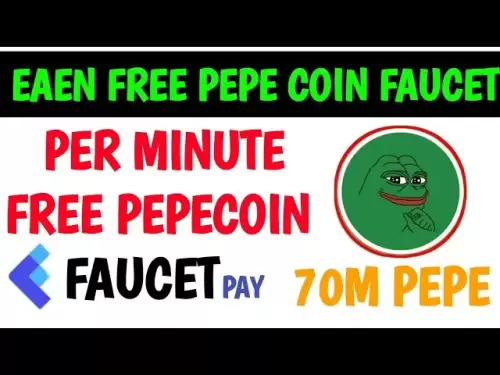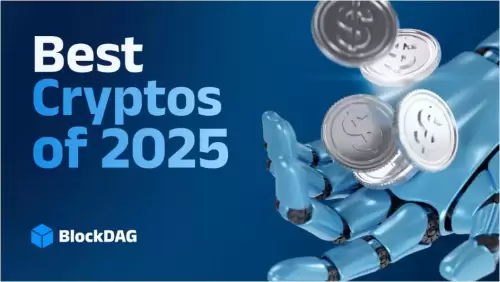 |
|
 |
|
 |
|
 |
|
 |
|
 |
|
 |
|
 |
|
 |
|
 |
|
 |
|
 |
|
 |
|
 |
|
 |
|
On May 26, 2025, Alpaca Finance, a prominent decentralized finance (DeFi) protocol known for its leveraged yield farming on BNB Chain, announced its decision to wind down operations.

DeFi protocol Alpaca Finance, known for leveraged yield farming on BNB Chain, is shutting down after four years. The protocol announced the closure on May 26, stating that it had made the decision to "safeguard our community and ensure a graceful and secure wind-down."
The team explained that the protocol had been facing financial difficulties due to consistent losses, macroeconomic challenges, and a competitive DeFi landscape.
Alpaca Finance's closure will impact users who had invested in the protocol's token or participated in its programs, as well as the broader DeFi ecosystem, which is losing a familiar platform for leveraged yield farming.
Why Did Alpaca Finance Fail?
Alpaca Finance's closure was announced after "extensive internal deliberation" and considering possible paths forward.
The protocol's blog post elaborated on the reasons for shutdown, mentioning that the team had evaluated several options but ultimately decided to wind down Alpaca Finance in a manner that prioritizes safeguarding the community and ensuring a graceful and secure wind-down.
The protocol's statement explained the difficulties it faced in recent months, including consistent financial losses, which are a common challenge for DeFi protocols in an increasingly competitive landscape, especially in the current macroeconomic climate.
Alpaca Finance's struggles were also evident in the plummeting Total Value Locked (TVL) on DefiLlama. While the protocol enjoyed a peak TVL of over $900 million in early 2022, this figure had dropped to $54.6 million by May 2025, showcasing a loss of user trust and engagement as yield farmers moved to more stable or innovative platforms.
Furthermore, Binance's delisting of the ALPACA token in May 2025 dealt a "major blow" to the project, rendering it unable to attract new users or pursue new initiatives, effectively stunting its growth.
The team also noted in their announcement that the protocol struggled to adapt to evolving market conditions, such as the rise of newer, more efficient DeFi platforms that offered better yields with lower risks.
Internal challenges played a role as well. Despite being a fair-launch project with no pre-sale or pre-mine, Alpaca Finance failed to maintain a sustainable tokenomics model.
The combination of a collapsing token price, low trading volume, and dwindling TVL became a double-edged sword that ultimately brought down the project.
The Pump-and-Dump Drama: A Calculated Exit Strategy?
Before its closure, Alpaca Finance was a subject of interest due to its token's dramatic price surge.
The ALPACA token shot up by 700% following Binance's delisting announcement in April 2025, reaching a notable high before its eventual crash. This pump was largely driven by a short squeeze, where traders who had bet against the token were forced to buy back at higher prices, further fueling the rally.
However, this massive pump raised red flags. The price surge occurred despite a lack of fundamental developments, with the project canceling token issuance and burning some tokens to reduce the circulating supply, an artificial attempt to "squeeze" the price upward. As a user sarcastically remarked, "What’s the point of burning tokens if you’re just going to shut down?"
This sentiment reflects a broader suspicion: the pump may have been orchestrated to allow insiders or large holders to dump their tokens at a profit before the shutdown.
This hypothesis was confirmed by the subsequent 30% price drop to $0.112 within 24 hours of the closure announcement, with a market cap of $17 million. At its all-time high (ATH) of $8.78, ALPACA's current price represents a staggering 99% decline, leaving retail investors feeling betrayed.
The pump-and-dump pattern suggests a lack of long-term vision. The absence of a clear roadmap post-pump indicates that the price surge was likely a calculated move to maximize profits before exiting, rather than a genuine effort to revive the project.
This behavior has sparked discussions about the ethics of such actions in DeFi, with users labeling the team "scammers, criminals."
This incident has put other DeFi tokens under scrutiny. Projects like Beefy Finance (BIFI), which also operates in the yield farming space on BNB Chain, may face similar risks if they cannot adapt to market shifts. Similarly, smaller DeFi tokens that Binance extends the Monitoring Tag to may follow ALPACA's trajectory if they fail to innovate or maintain user trust.
Disclaimer:info@kdj.com
The information provided is not trading advice. kdj.com does not assume any responsibility for any investments made based on the information provided in this article. Cryptocurrencies are highly volatile and it is highly recommended that you invest with caution after thorough research!
If you believe that the content used on this website infringes your copyright, please contact us immediately (info@kdj.com) and we will delete it promptly.
-

-

-

-

-

-

-

-

-

- BlockDAG's Presale Power: Returns and Sustainability in the Crypto Wild West
- Jul 26, 2025 at 11:40 pm
- BlockDAG distinguishes itself with tangible development, a $0.05 mainnet launch price, and over 4,500 active developers. All signs suggest its long-term vision, especially compared to fleeting meme coins.




























































